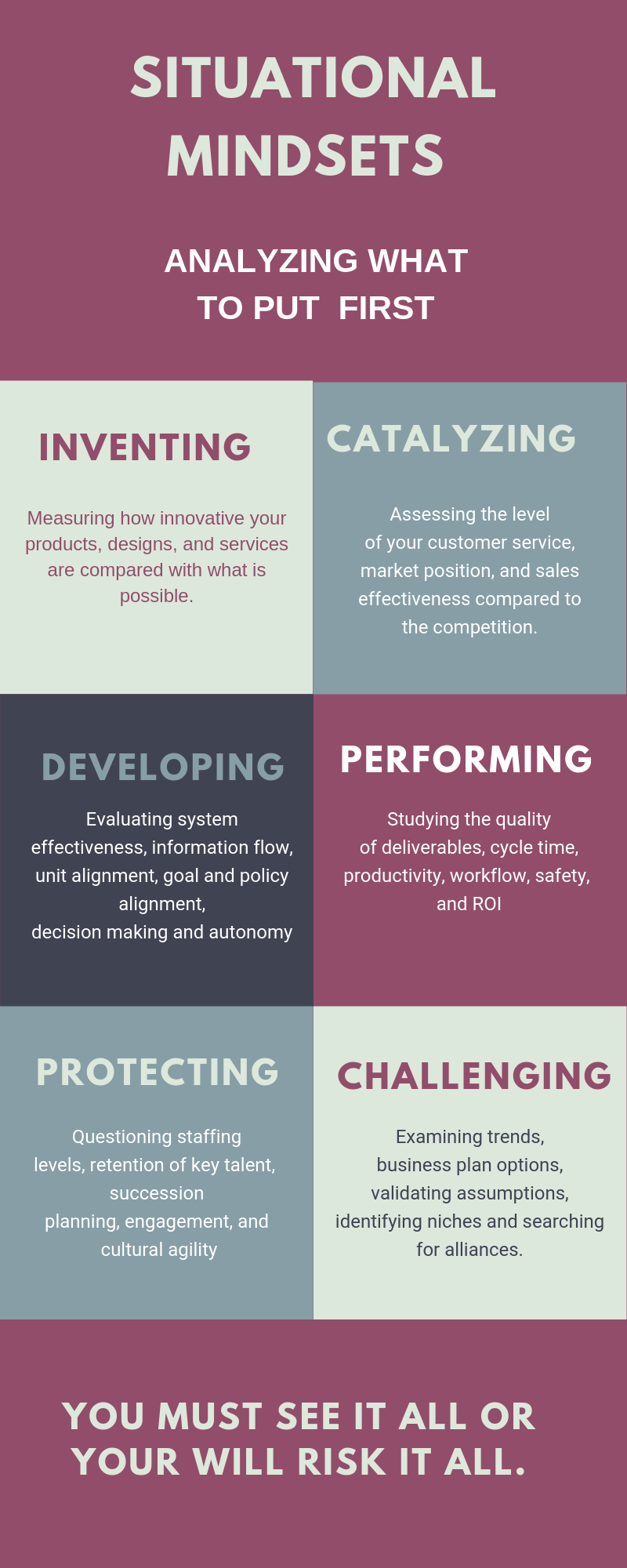What is Your COVID-19 Lens? Six Points of View

By Dr. Mary Lippitt, Author Situational Mindsets: Targeting What Matters When It Matters
Our response to the COVID-19 pandemic must be more than a dualistic choice between preventing infection or “opening up” to save the economy. Simple, obvious responses lead to greater failure rather than desired results.
Addressing complex issues requires consideration of multiple factors and contingencies. During the 1918 Spanish Influenza pandemic, early and sustained intervention in cities such as Cleveland ultimately produced a more robust economic recovery when compared with those choosing a limited response. And “opening up” does not mean that operations will resume. During the 1918 Spanish Flu pandemic, Philadelphia shipyard employees refused to return to work even though ship construction was essential to the US effort in World War 1. Today, some meat packing and retail employees have elected to stay home. Opening the doors does not guarantee customers will enter.
This pandemic requires granular analysis, not an oversimplified, short-term binary choice. While it is tempting to “keep things simple,” attractive easy answers are wrong. We face a complex, interdependent and systemic challenge. Hand wringing over polarized options stifles creative insights necessary for dealing with persistent and pervasive threats. We must and can do better.

We can expand our understanding, explore options, and direct our decisions using six situational mindsets or lenses. Dangerous blind spots surface if we overlook one of these perspectives.
- The inventing lens stresses creativity the need to develop new treatments, medications and vaccines. It seeks innovation synergies to leverage existing resources and practices.
- The catalyzing lens focuses on demand. It targets the needs of first responders and essential workers, while rapidly responding to hot spots. It also focuses on enlisting resources to meet obligations.
- The developing point of view targets infrastructure and policies. It seeks to ensure hospital capacity, procure supplies, issue guidelines, and set goals. It also clarifies goals, roles and responsibilities for effective execution.
- The performing mindset examines operational factors. It analyzes patient data, deploys testing, and measures efficacy. It also adjusts staffing and resources to address gaps.
- The protecting perspective focuses on people, culture, and society. It centers on safety education, providing for basic needs, ensuring compliance, training contact tracers, and recognizing success. It also fosters trust, confidence, and community support.
- The challenging mindset identifies emerging needs, tests assumptions, and prepares for future episodes. It also examines the impact of demographic, economic, regulatory, and security challenges.
As Obi-Wan Kenobi told us in Return of the Jedi, “You’re going to find that many of the truths we cling to depend greatly on our own point of view.” When we grapple with all of these aspects, we can pivot from a cavalier ‘either-or’ divisiveness to an informed and respectful search for wise action. Situational awareness unfogs our creative thinking and enables us to successfully explore the problems we must solve. What we see on the surface is not all that there is to see. We must learn to look beyond our basic frames to grasp complex realities, surface different perspectives, and define implementable solutions to meet this challenge.
Dr. Lippitt can be reached at mlippitt@enterprisemgt.com.










